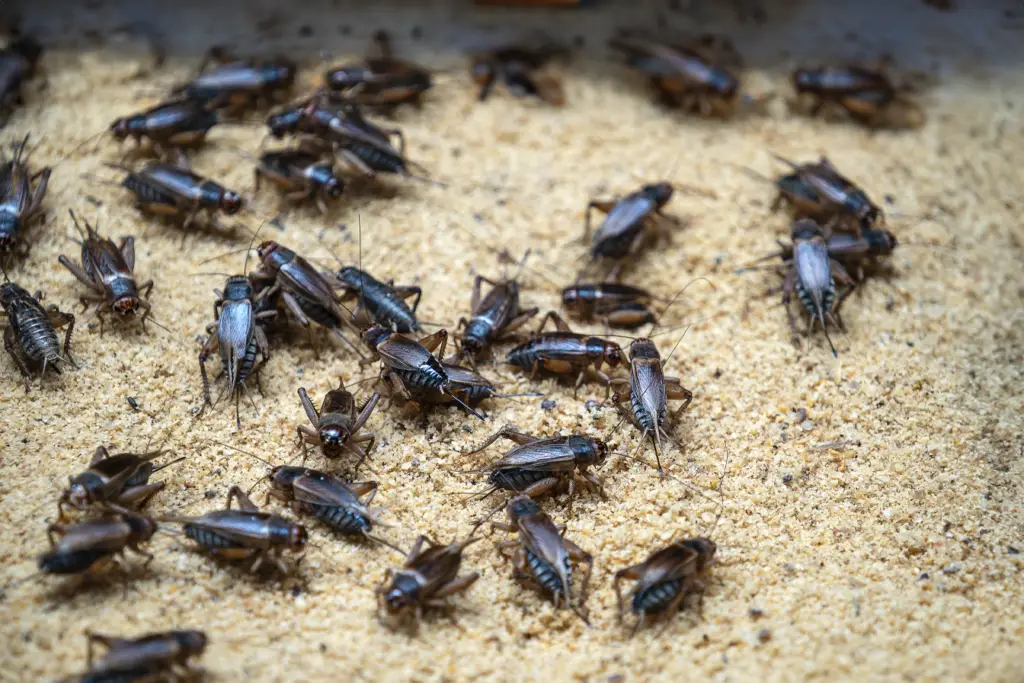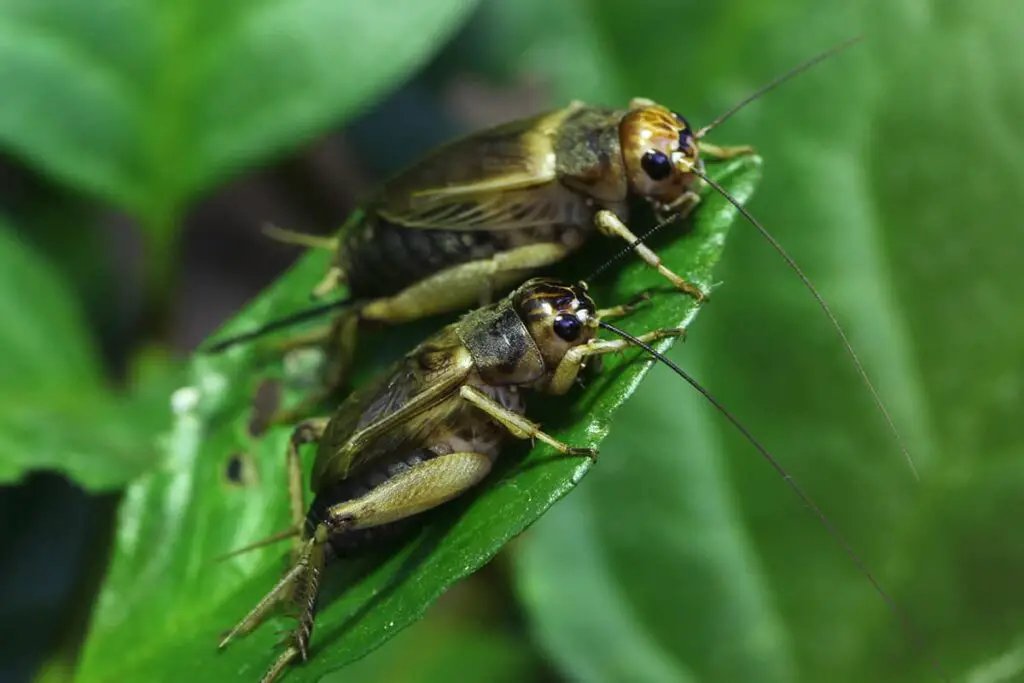
Keeping crickets from pulling a Houdini on you involves a few clever tricks and proper cage maintenance. If you’re the proud owner of a cricket farm, be it for reptile food or simply for the sound of their chirps, you know the challenge of containing these agile jumpers. An escape-proof cricket cage not only prevents the inconvenience of a house full of stray crickets but also ensures that your pets receive their intended food.
To start, the design of your cricket enclosure is paramount. A secure tank or container with tight-fitting lids and no small openings can save you a lot of trouble. You might think a simple aquarium with a lid would do the trick, but these jumpy insects can find their way out of even the smallest gaps. Employing additional measures, like mesh netting or plastic wrap, to cover potential exit points can be highly effective. Remember, it’s not just about blocking their path but also understanding and managing their behavior in response to their environment.
Next, it’s essential to inspect every inch of your cricket’s home for possible escape routes. Small cracks or gaps might seem insignificant to you, but they’re like an open highway for crickets. Sealing these pathways requires attention to detail and sometimes using materials like silicone to ensure there are no breaches. Also, the interior setup of your cage with elements such as egg cartons or proper ventilation will need careful consideration to maintain a safe and secure habitat for your crickets.
Understanding Cricket Behavior
When you’re trying to keep crickets contained, it’s crucial to know why they may attempt to escape and which parts of their enclosure they might target. This understanding will help you fortify their habitat effectively.
Cricket Escape Motivations
Crickets are naturally inclined to roam, making them skilled escape artists if their habitat isn’t up to par. Their primary motivations for escape include searching for food, seeking a better environment, and avoiding overcrowded conditions. Be aware that they might also attempt to flee if they sense a threat or if the conditions inside the cage become unfavorable, such as extreme temperatures or high humidity.
Common Escape Routes for Crickets
Crickets are adept at finding and exploiting vulnerabilities in their enclosures. Common escape routes include:
- Gaps in the lid or cover: Crickets can squeeze through surprisingly small spaces, so ensure all potential exit points are sealed.
- Ventilation holes: These are necessary for air circulation but can also act as a gateway for escape. Use a fine mesh to cover these holes without restricting airflow.
- Seams and cracks: Regularly inspect the enclosure for any damage and repair it. Even the smallest crack can be a potential escape path.
Designing the Cage
When setting out to create an escape-proof cricket cage, focusing on the right materials and secure access points is crucial for success.
Selecting the Right Materials
Your cricket cage needs to be made of sturdy materials that resist chewing and can withstand the natural activities of your crickets. For the main structure, a plastic tub or a glass aquarium can serve as a reliable base. If you opt for a plastic solution, consider high-density polyethylene which is both durable and easy to clean. For ventilation, a piece of fine metal mesh screen is essential to ensure your crickets have ample air without risking an escape.
Creating Secure Access Points
The access points of your cricket cage are potential escape routes. It’s vital that these areas are secured properly. Using a locking lid with a screen can prevent crickets from pushing their way out. If you’re crafting your own lid, ensure to attach the mesh with strong adhesive or clips. For additional security, double-check that the access point seals tightly and audit regularly for any wear and tear that may offer an unintended escape route. Implementing these strategies can help keep the crickets contained effectively.
Cage Maintenance and Surveillance
Ensuring your cricket cage is escape-proof involves routine monitoring and timely fortification. These steps will not only keep your crickets contained but also protect them from external harm.
Regular Inspections for Weak Spots
Consistently check every inch of your cricket cage for gaps or damage. Look at the corners, joins, and any other areas where parts come together, as these are common escape routes. Be meticulous, as even the smallest gap can be a potential exit for a cricket.
- Check daily for:
- Loose mesh or screens
- Holes or tears
- Degraded materials or rust
Installing Escape-Proof Measures
To make your cage escape-proof, consider implementing additional safeguards. You can find weather stripping to seal gaps around doors or add fine mesh over larger openings to prevent crickets from squeezing through.
- Install:
- Fine mesh or wire screens
- Door sweeps or foam strips
- Lockable cage doors
By incorporating regular checks for weak points and installing the right escape-proof measures, your cricket cage will be well-maintained and secure, keeping your little jumpers right where they should be.
Frequently Asked Questions
Navigating the world of cricket keeping can be tricky, particularly when it comes to making your cricket cage escape-proof. The following FAQs provide targeted advice to help you secure your enclosure effectively.
How can I prevent crickets from climbing out of their enclosure?
To prevent crickets from climbing, coat the interior top edges of your cage with a slippery substance like petroleum jelly or use smooth materials such as glass or plastic for the enclosure which crickets find difficult to grip.
Are there specific materials that crickets can’t grip onto?
Yes, crickets find it difficult to climb on smooth surfaces like glass, plastic, or any other slick material as they lack the grip to hold on.
What type of lid is best for keeping crickets contained?
A tight-fitting lid made of fine mesh or a solid material with ventilation holes too small for crickets to pass through is ideal for keeping them contained.
Can crickets escape through small openings and how do I prevent that?
Crickets can escape through surprisingly small gaps. Ensure all joints and possible openings are sealed properly. You can use silicone sealant for any cracks and gaps, especially around the edges of the cage.
What measures can be taken to ensure crickets don’t jump out of their cage?
Utilize a lid or cover with a substantial enough height above the enclosure or provide a tall barrier that can prevent crickets from jumping out when you open the cage.
How do I secure the ventilation areas of a cricket cage without compromising airflow?
Use a mesh or screen with holes small enough to prevent cricket escapes and secure it firmly to ventilation openings. This will keep the air flowing while making sure your crickets stay put.
Driven by a passion for those tiny creatures that rule our world, we at Bug Domain strive to be your go-to resource for information on insects.




